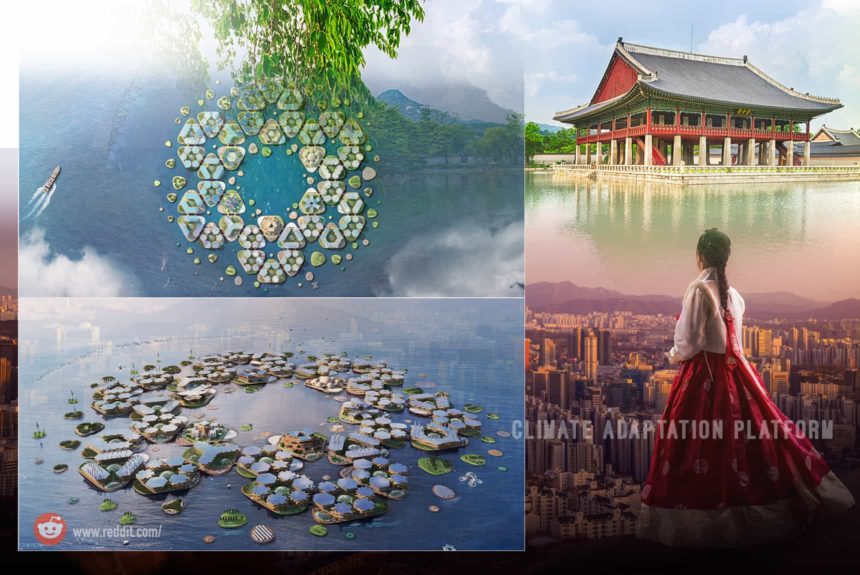Rising sea levels threaten Busan City like many coastal cities in Asia. To address this threat, the city is building a floating city. The construction of the prototype will begin this year, 2022, on South Korea’s coast and will be finished by 2025 with people living in it (Busan a South, 2021).
The Economist article “Busan, a South Korean city, plans a floating neighbourhood” reports that the project, with a price tag of $200 million designed to house 300 to 500 people, will be built and funded by Oceanix with endorsement from UN-HABITAT, a UN agency that deals with urbanisation.
Oceanix “flood-proof” city results from a collaboration between designers, architects, and engineers.
The floating city will be two-hectare, 300 resident neighbourhoods, which will be connected to form a population of 1,650 villages that transform into sustainable cities complete with restaurants, farms, and leisure facilities. Residents will be able to produce their food and energy, not only it will also have a “zero waste closed-loop system”.
Some of its floating platforms will have wind turbines and solar panels. Others will grow vegetation like bamboo that will be used as materials to construct new buildings. It will also have on-site water treatment and systems for collecting and storing rainwater.
The city will also be climate-resilient and withstand natural disasters like tsunamis and hurricanes.
Architects envision a fleet of electric vehicles from hydrofoil water taxis to solar-powered ferries to connect floating neighbourhoods and the mainland.
Floating cities have all the features of a climate-resilient and climate-friendly city – it is sustainable, uses renewable energy for power, produces zero waste, can withstand floods, sea-level rise, and other natural disasters, and uses construction materials like bamboo with a carbon-zero footprint.
Perhaps a critical question that needs to be asked is that are these floating cities also accessible for the poorest and most vulnerable to climate change, or will it only cater to the wealthy who can afford it?
To know more about floating cities, click the see the video below:
Source:
Busan, a South Korean city, plans a floating neighbourhood. (2021 December 4). CNN. Retrieved from https://www.economist.com/asia/2021/12/04/busan-a-south-korean-city-plans-a-floating-neighbourhood?
South Korea green-lights plans for flood-resistant “floating city”. (2021 December 10). CNN. Retrieved from https://edition.cnn.com/style/article/oceanix-city-floating-busan-south-korea/index.html
Wray, S. (2021, November 29). Flood-resistant floating city to be built in South Korea. Cities Today. Retrieved from https://cities-today.com/flood-resistant-floating-city-to-be-built-in-south-korea/



Leave a Reply